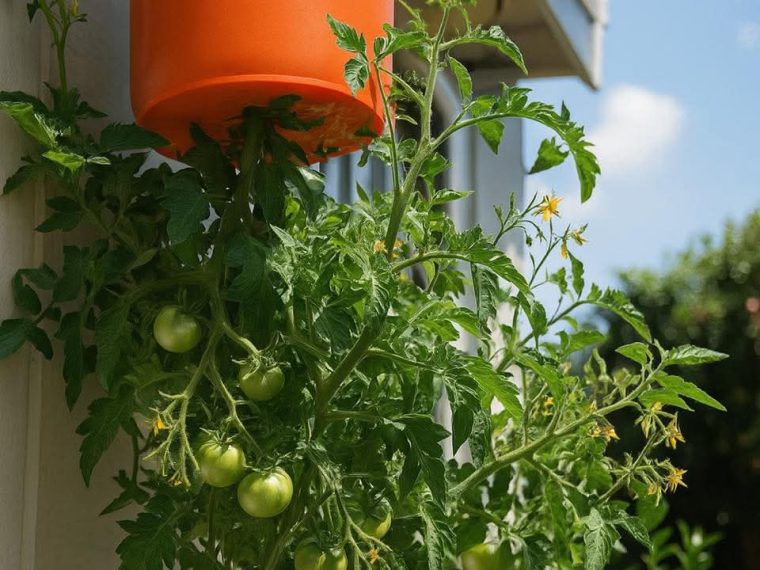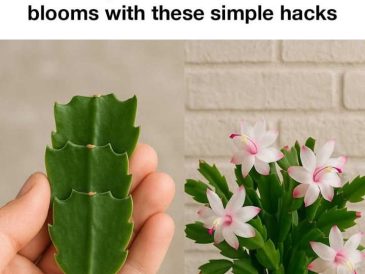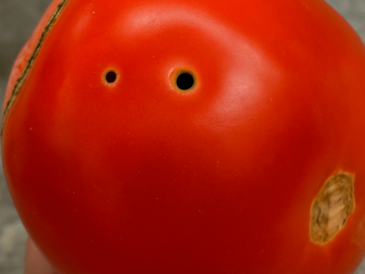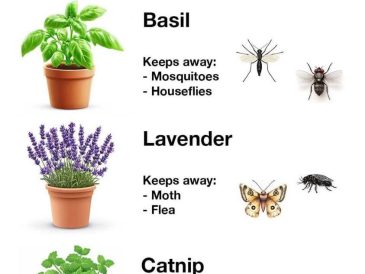Tomatoes are a favorite in many home gardens, valued for their juicy fruit and versatility in the kitchen. But what if you’re short on space – or simply want to try something innovative?
Growing tomatoes upside down offers a creative and efficient way to cultivate your own harvest, even on a small balcony or urban patio.
This gardening method uses gravity to your advantage, turning traditional planting on its head – literally!
Why Grow Tomatoes Upside Down?
Before diving into the “how,” it’s important to understand why gardeners choose upside-down growing:
- Space-saving – Ideal for patios, balconies, and small urban spaces.
- Better air circulation – Helps prevent common fungal diseases.
- Fewer soil-borne pests – Plants are lifted off the ground, making it harder for pests to attack.
- Ease of harvest – Tomatoes dangle conveniently, ready for picking.
- A conversation piece – Upside-down tomatoes look unique and spark curiosity!
Choosing the Right Tomato Variety
Not every tomato variety is suitable for upside-down growing.
Look for:
Determinate (bush) tomatoes – Compact and controlled in size, perfect for containers.
Cherry or grape tomatoes – Smaller fruit puts less strain on stems.
Varieties like:
- ‘Patio Princess’
- ‘Tiny Tim’
- ‘Bush Early Girl’
- ‘Balcony’
Indeterminate tomatoes (the sprawling, vining types) tend to become too heavy and unwieldy for an upside-down planter, risking stem breakage and planter tipping.
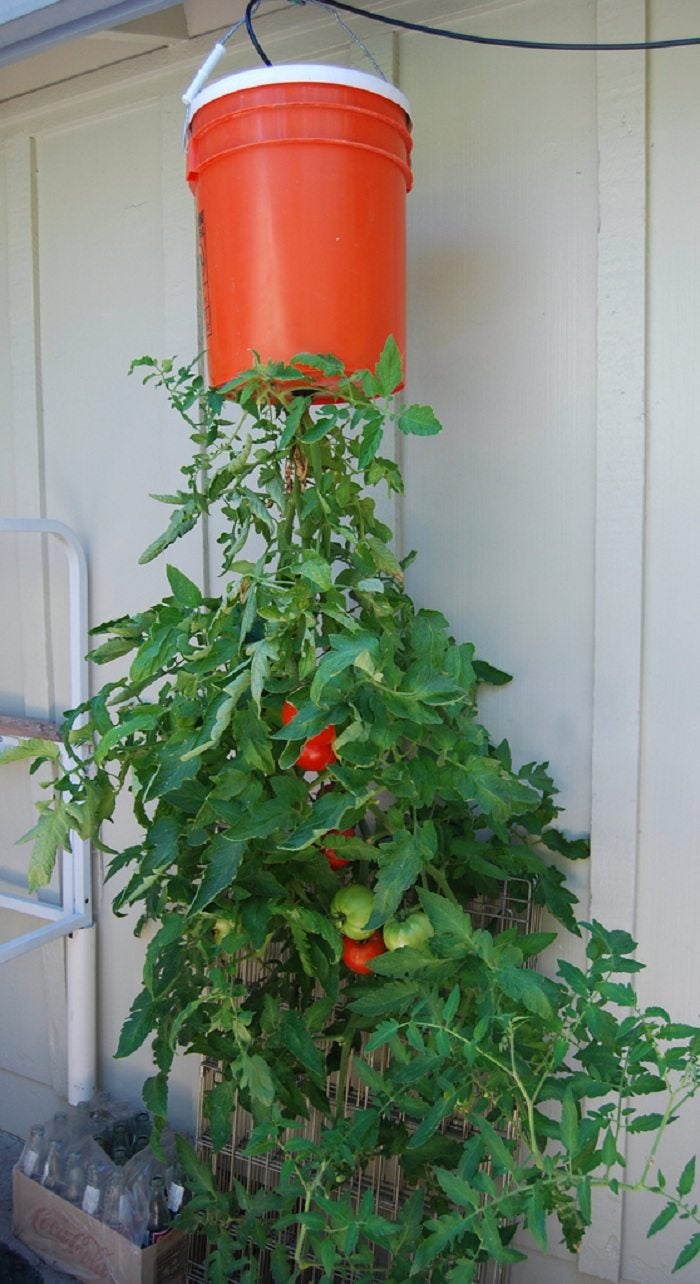
How to Make an Upside-Down Tomato Planter
Here’s a detailed guide for building your own DIY upside-down tomato planter.
Materials You’ll Need:
- A large sturdy bucket or container (e.g., 5-gallon bucket)
- A lid for your bucket
- A tomato seedling (small, healthy plant)
- Good-quality potting soil
- A drill or sharp utility knife
- Landscape fabric, mesh screen, or a coffee filter
- Slow-release fertilizer
- Strong rope, chain, or a heavy-duty hook
- Optional: mulch for moisture retention
Step-by-Step Instructions:
1. Prepare the Bucket
- Drill a 2–3 inch hole in the center of the bucket’s bottom. This will be the opening through which your tomato plant grows downward.
- Drill several small drainage holes around the main hole to prevent excess water buildup.
2. Insert the Tomato Plant
- Gently remove the tomato seedling from its original pot.
- Wrap the root ball in a piece of landscape fabric, mesh, or a coffee filter. This helps hold the soil in place while allowing water to pass through.
- Carefully guide the plant’s leafy stem through the large hole from the inside of the bucket so the leaves dangle outside the bottom.
3. Add Soil and Fertilizer
- While holding the plant in place, begin filling the bucket with potting mix, gently packing it around the root ball to eliminate air pockets.
- Mix in a slow-release fertilizer to nourish the plant throughout the season.
- Fill the bucket to the top, leaving about an inch of space below the rim.
4. Secure the Lid
Place the lid on the bucket. This helps keep soil from spilling out and reduces evaporation.
5. Hang Your Planter
- Attach a strong rope or chain to the handle of the bucket.
- Hang the planter in a spot that receives at least 6–8 hours of direct sunlight daily. A sturdy pergola, strong hook on a beam, or balcony railing can work well.
6. Water Regularly
- Water your plant thoroughly until water begins to drain from the holes.
- Monitor the soil’s moisture daily, especially in hot weather. Hanging planters dry out faster than in-ground beds.
- A layer of mulch on top of the soil (under the lid) can help retain moisture.
7. Provide Extra Support if Needed
As fruit develops, the weight may strain the stem. Gently tie the vine to a small stake pushed into the soil inside the bucket, or use soft ties to help support the fruit cluster.

Benefits of Growing Tomatoes Upside Down
Let’s explore the major advantages in more depth:
Space Efficiency
Traditional gardens require horizontal space, but upside-down planters let you garden vertically, freeing up floor area for other crops or activities.
It’s a fantastic option for apartment balconies, urban patios, or even a sunny porch.
Reduced Pest Problems
Because plants are suspended off the ground, they’re less accessible to:
- Slugs
- Snails
- Cutworms
- Soil-borne pathogens
This can lead to healthier plants and cleaner fruit.
Improved Airflow
Better circulation helps prevent fungal issues like:
- Powdery mildew
- Early blight
- Gray mold
Healthy airflow around leaves and stems promotes faster drying after rain or watering.
Convenient Harvesting
Instead of bending over or reaching through dense foliage, ripe tomatoes hang down where they’re easy to see and pick.
Water Efficiency
The closed bucket system retains moisture better than shallow pots, though it still requires careful monitoring in hot weather.
Drawbacks of Growing Tomatoes Upside Down
Despite the benefits, there are a few challenges to consider:
Limited Plant Size
Large, indeterminate tomatoes are too heavy for most upside-down systems. Stems may snap under the weight of heavy fruit clusters.
Watering Challenges
Upside-down containers dry out quickly due to exposure to wind and sun on all sides. Expect to water:
- Daily during hot weather
- Possibly even twice a day during heat waves
Weight Concerns
A 5-gallon bucket full of soil and water can be very heavy – often 30–50 pounds. Be sure your hanging location can safely support the load.
Potential Stem Stress
Gravity pulls on the stem and fruit, causing strain that could:
- Bend or break stems
- Cause fruit drop
Providing support inside the bucket or choosing lightweight fruit varieties helps prevent this.
Pro Tips for Success
- Use High-Quality Potting Soil: Lightweight mixes with good water retention work best. Avoid garden soil, which can become too compacted.
- Fertilize Regularly: Tomatoes are heavy feeders. A monthly feeding with a balanced fertilizer or compost tea helps sustain healthy growth.
- Mulch Inside the Bucket: A thin layer of mulch helps reduce evaporation and keeps the root zone cooler.
- Rotate Your Planter: If sunlight is uneven, give your planter a quarter turn every few days for even light exposure.
- Inspect for Pests: Check both sides of leaves regularly for pests like aphids or spider mites, which can still appear.
Is Upside-Down Growing Worth It?
Upside-down tomato gardening is:
- Fun and visually striking
- Space-efficient for small urban spaces
- A conversation starter for gardening friends
However, it requires close attention to watering, weight management, and plant support.
For gardeners with limited space or those who love innovative methods, it’s absolutely worth trying.
Even if it’s not your primary method, an upside-down planter can be a unique addition to your gardening repertoire.
Growing tomatoes upside down is an ingenious way to turn gravity into an ally. It’s perfect for urban gardeners looking to maximize their space, reduce pests, and simplify harvests.
Whether you’re a gardening novice eager to experiment, or a seasoned grower exploring new techniques, upside-down tomatoes offer a fun, rewarding challenge.
And who knows? Your upside-down tomato garden might just become the highlight of your patio or balcony this season.

